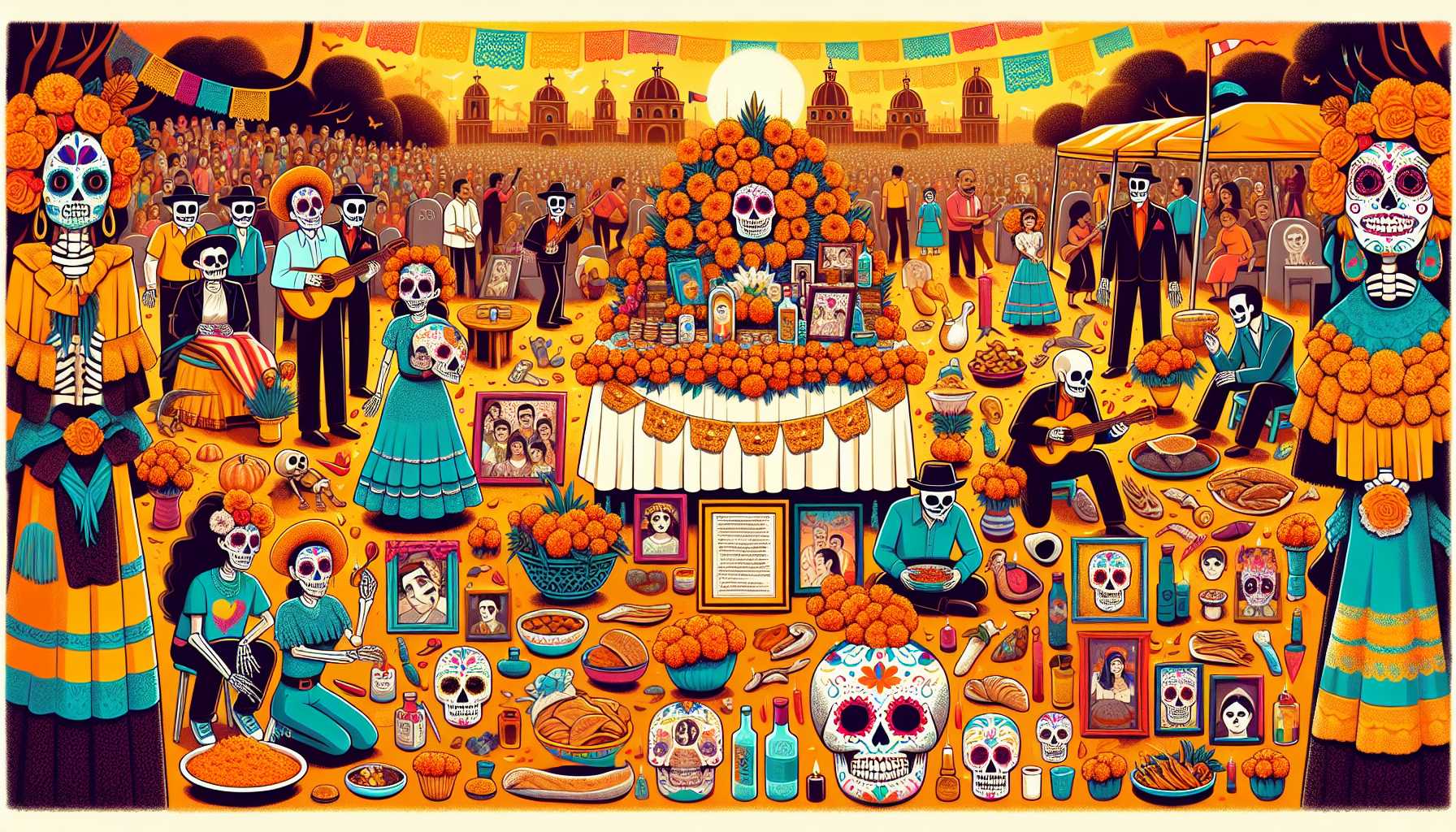
The Vibrant Traditions of Dia de los Muertos Celebrations
The Day of the Dead (Día de los Muertos) is a vibrant Mexican tradition celebrated primarily on November 1st and 2nd, honoring deceased loved ones.
Shikashanohi (Dia de los Muertos) wa, omoni 11-gatsu 1-nichi to 2-nichi ni iwawareru katsuki aru Mekishiko no dentō deari, nakunatta aisuru hitobito o honoring suru.
死者の日(ディア・デ・ロス・ムエルトス)は、主に11月1日と2日に祝われる活気あるメキシコの伝統であり、亡くなった愛する人々を honoring する。
This colorful festival combines indigenous beliefs with Catholic influences, creating a rich tapestry of rituals and customs.
Kono karafuru na matsuri wa, senjūmin no shinnen to katorikku no eikyō o kumiawase, gishiki to kanshū no yutaka na tapesutorī o tsukuridasu.
このカラフルな祭りは、先住民の信念とカトリックの影響を組み合わせ、儀式と慣習の豊かなタペストリーを創り出します。
Families create altars (ofrendas) adorned with photos, favorite foods, and mementos of the departed to invite their spirits back for a day of reunion.
Kazoku wa, nakunatta hitobito no shashin, sukina tabemono, omoide no shina o kazatta saidan (ofurenda) o tsukuri, karera no rei o manei shite saikai no hi o iwaimasu.
家族は、亡くなった人々の写真、好きな食べ物、思い出の品を飾った祭壇(オフレンダ)を作り、彼らの霊を招いて再会の日を祝います。
During the festivities, communities gather to honor and remember those who have passed, often visiting cemeteries to clean graves and decorate them with flowers, especially marigolds, which symbolize death and the celebration of life.
Matsuri no aida, komyuniti wa nakunatta hitobito o honoring shi, omoidasu tame ni atsumari, haka o sōji shite hana (toku ni marīgōrudo) de kazaru tame ni bochi o otozureru koto ga yoku arimasu.
祭りの間、コミュニティは亡くなった人々を honoring し、思い出すために集まり、墓を掃除して花(特にマリーゴールド)で飾るために墓地を訪れることがよくあります。
The holiday features lively parades, music, dance, and the iconic sugar skulls, all of which contribute to the joyful remembrance of the deceased.
Kono kyūjitsu wa, ikiikito shita parēdo, ongaku, dansu, soshite shōchōteki na satō no zugai kotsu o tokuchō to shite ori, subete ga nakunatta hitobito no tanoshī kioku ni kōken shiteimasu.
この休日は、生き生きとしたパレード、音楽、ダンス、そして象徴的な砂糖の頭蓋骨を特徴としており、すべてが亡くなった人々の楽しい記憶に貢献しています。
Overall, Día de los Muertos is a time for celebration rather than sorrow, emphasizing the continuity of love and connection between the living and the dead.
Zentai toshite, Dia de los Muertos wa kanashimi de wa naku iwai tame no toki de ari, seisha to shisha to no aito tsunagari no keizoku o kyōchō shiteimasu.
全体として、ディア・デ・ロス・ムエルトスは悲しみではなく祝うための時であり、生者と死者との間の愛とつながりの継続を強調しています。
It showcases Mexico's unique cultural heritage and serves as a reminder of the importance of family, memory, and the cycle of life and death.
Kore wa Mekishiko no dokuji no bunka isan o shimeshi, kazoku, kioku, soshite sei to shi no saikuru no jūyōsei o omoidasaseru mono desu.
これはメキシコの独自の文化遺産を示し、家族、記憶、そして生と死のサイクルの重要性を思い出させるものです。
Based on this article
